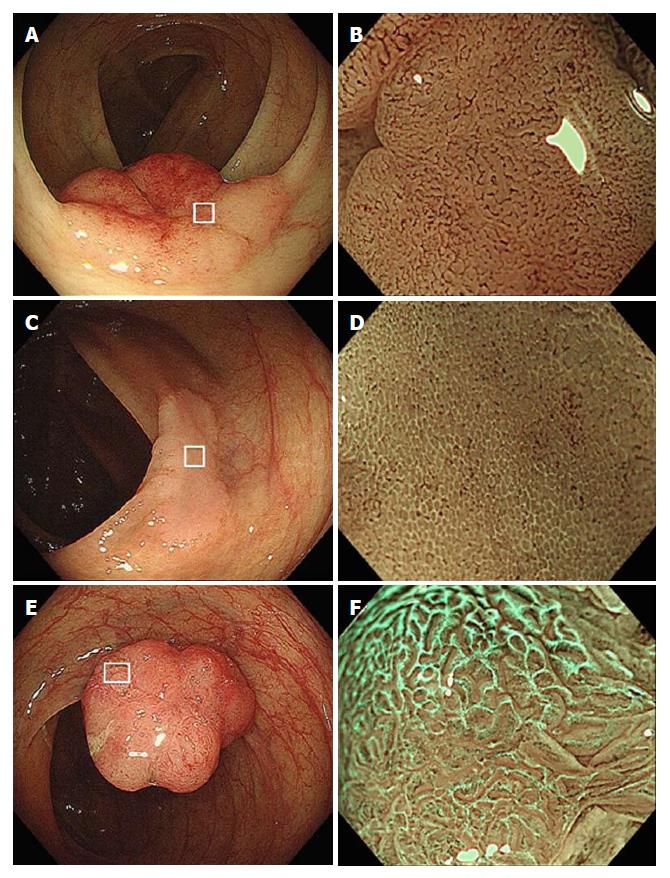Copyright
©The Author(s) 2017.
World J Gastroenterol. Dec 21, 2017; 23(47): 8367-8375
Published online Dec 21, 2017. doi: 10.3748/wjg.v23.i47.8367
Published online Dec 21, 2017. doi: 10.3748/wjg.v23.i47.8367
Figure 1 Magnifying endoscopic features with narrow-band imaging.
A: Conventional view. A protruding lesion is detected in the transverse colon. B: M-NBI of the box in Figure 1a shows a clear microvascular pattern without WOS; C: Conventional view. A flat-elevated lesion is detected in the ascending colon. D: M-NBI of box in Figure 1C shows WOS obscuring the microvascular pattern. This WOS is regarded as regular WOS, since it is well-organized and distributed symmetrically with a regular reticular pattern. E: Conventional view. A protruding lesion is detected in the ascending colon. F: M-NBI of the box in Figure 1e shows WOS obscuring the microvascular pattern. This WOS is regarded as irregular WOS, since it is disorganized and distributed asymmetrically with an irregular speckled pattern. M-NBI: Narrow-band imaging; WOS: White opaque substance.
- Citation: Kawasaki K, Eizuka M, Nakamura S, Endo M, Yanai S, Akasaka R, Toya Y, Fujita Y, Uesugi N, Ishida K, Sugai T, Matsumoto T. Association between white opaque substance under magnifying colonoscopy and lipid droplets in colorectal epithelial neoplasms. World J Gastroenterol 2017; 23(47): 8367-8375
- URL: https://www.wjgnet.com/1007-9327/full/v23/i47/8367.htm
- DOI: https://dx.doi.org/10.3748/wjg.v23.i47.8367









